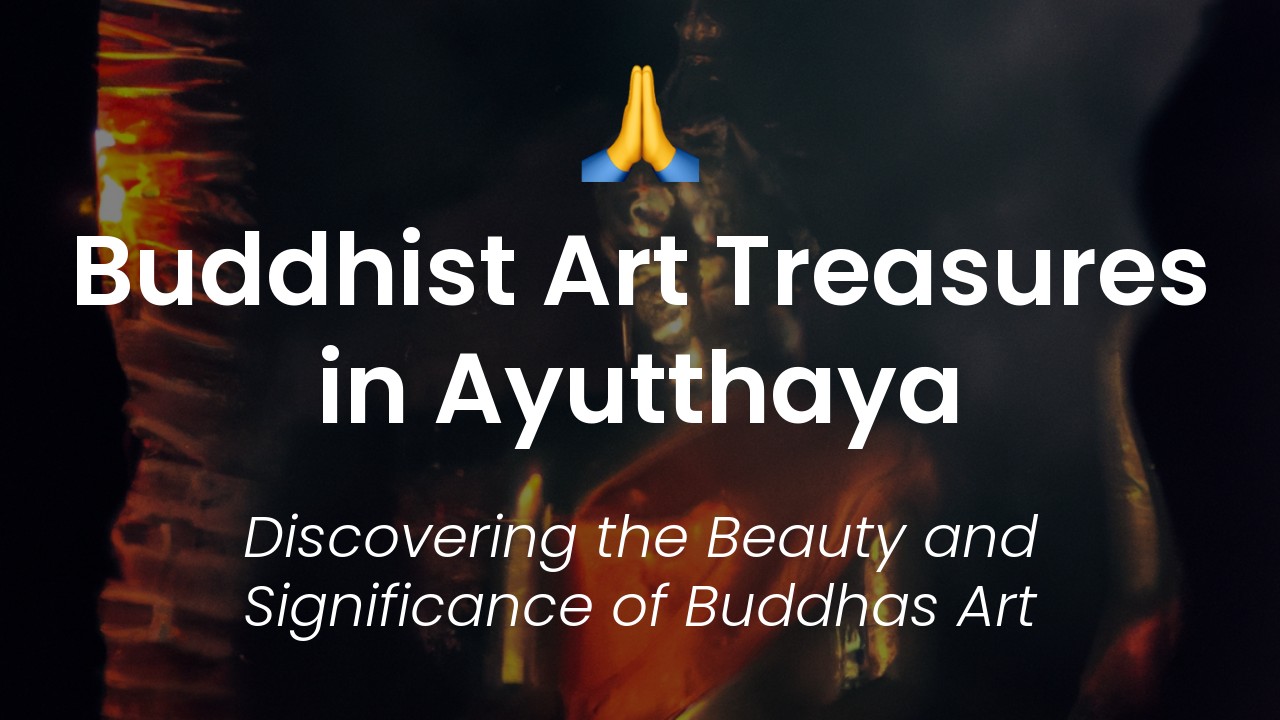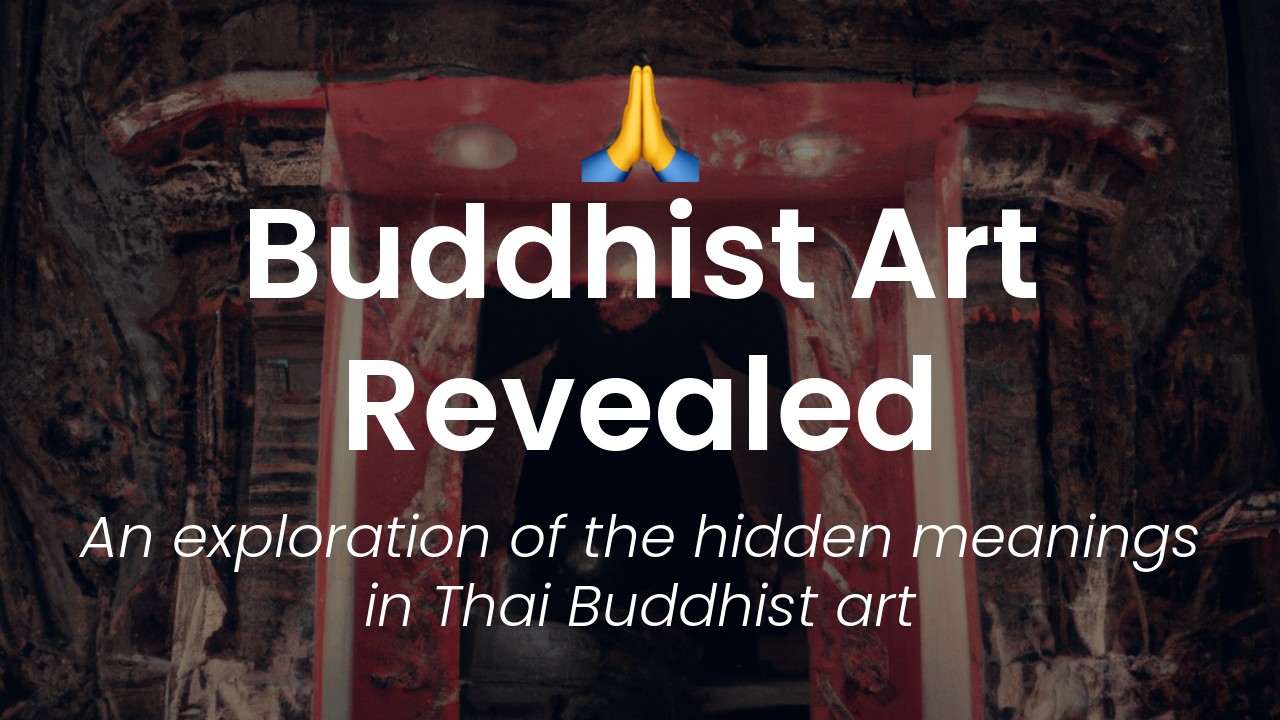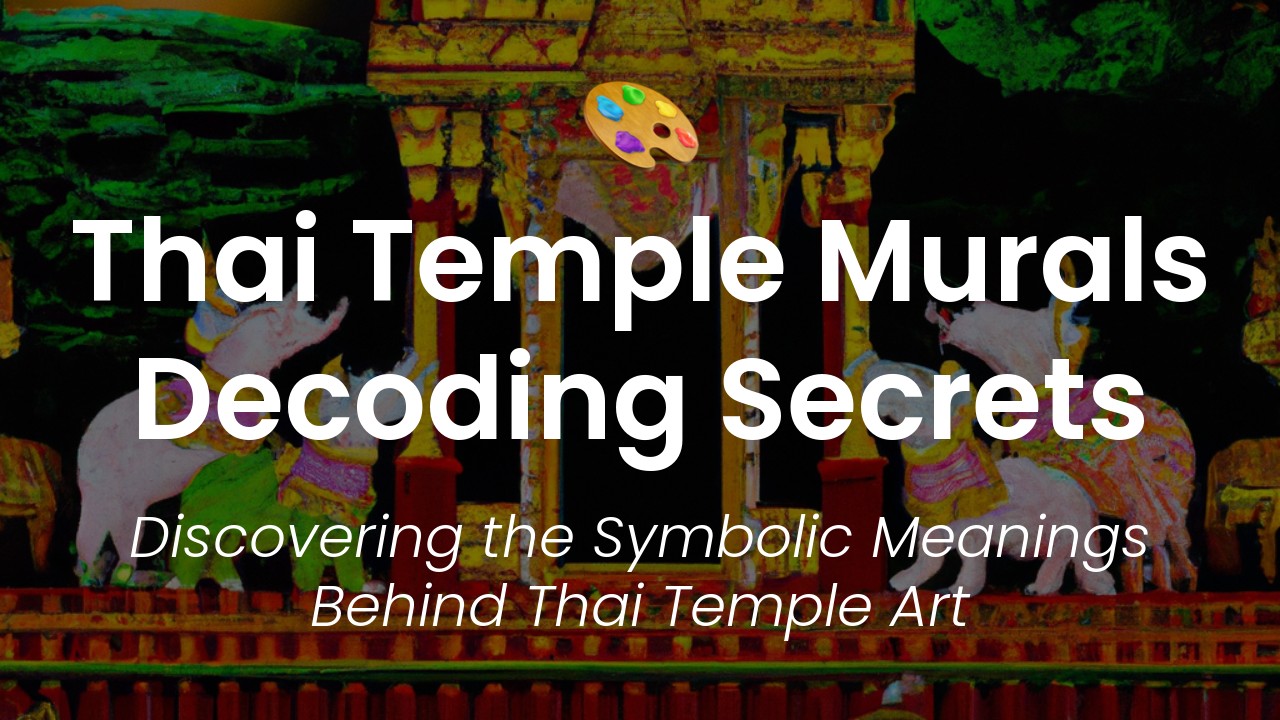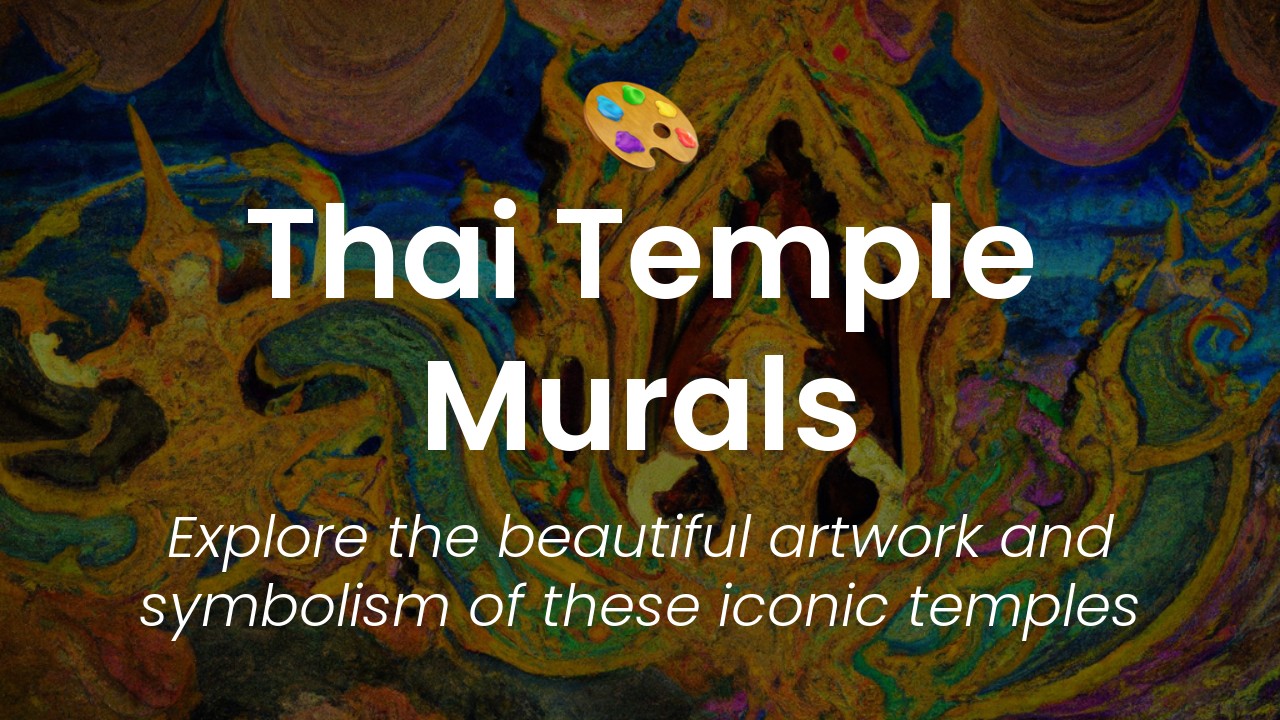As a passionate writer and blogger, I have been traveling across Thailand for a long time, and one of the most captivating places in the country that I have visited is the ancient city of Ayutthaya. This former capital of the Siamese Kingdom was a center of power, trade, culture, and art for several centuries, until it was destroyed by the Burmese army in 1767. However, the ruins and relics of Ayutthaya still bear testament to the city's glorious past, and there are plenty of fascinating treasures to discover.
In this blog article, I am going to focus on Ayutthaya's Buddhist art treasures, as they represent not only the creative genius of the Thai people, but also the spiritual and intellectual legacy of their culture. Buddhism has been the dominant religion in Thailand for more than a millennium, and it has influenced every aspect of Thai life, including art and architecture. Consequently, Ayutthaya is a treasure trove of Buddhist art, featuring numerous temples, stupas, sculptures, murals, and other artifacts that embody the essence of Thai Buddhism.
In the following paragraphs, I will take you on a virtual tour of Ayutthaya's Buddhist art treasures, unraveling the mysteries and stories behind each masterpiece. By the end of this article, you will have a deeper understanding and appreciation of Thai culture and Buddhism, as well as an irresistible urge to visit Ayutthaya and witness its beauty firsthand. So, have a cup of tea, sit back, and let me guide you through the enchanting realm of Ayutthaya's Buddhist art treasures.
Ayutthaya: The Ancient Capital of Siam
Ayutthaya is an ancient city in Thailand that served as the capital of the Kingdom of Siam from 1350 to 1767. Today, Ayutthaya is a popular tourist destination for its well-preserved historical landmarks and rich culture, particularly its Buddhist art.
Buddha Statues of Ayutthaya's Temples
Buddhism is the predominant religion in Thailand and has played a significant role in shaping the country's culture and art. Ayutthaya boasts numerous Buddhist temples or wat, each with their own unique Buddha statues.
One of the most prominent Buddha statues in Ayutthaya is the Reclining Buddha at Wat Lokayasutharam. This statue measures 42 meters long and 8 meters high and is one of the largest in the country. It depicts Buddha in his final moments on Earth before achieving enlightenment.
Another famous Buddha statue in Ayutthaya is the Standing Buddha at Wat Phanan Choeng. This statue is one of the most revered in the country and is believed to have existed since the 14th century. It stands over 19 meters high and is adorned with gold and colorful glass.
The Characteristics of Ayutthaya's Buddhist Art
Ayutthaya's Buddhist art is characterized by its intricate details, vibrant colors, and fusion of art styles from different regions. These characteristics are evident in the numerous intricate carvings, elaborate murals, and gilded ornaments found in the city's temples.
One of the most notable examples of Ayutthaya's fusion of art styles is the Khmer-inspired temple of Wat Chaiwatthanaram. This temple's design is influenced by the Khmer Empire, which ruled over much of Southeast Asia, including parts of modern-day Thailand, from the 9th to the 15th century. The temple's towering prang, or spire, is reminiscent of those found in Angkor Wat, the most famous Khmer temple in Cambodia.
Wat Mahathat: The Famous Ruins and its Iconic Buddha Head in Tree Roots
Wat Mahathat is one of Ayutthaya's most famous temple ruins, with its iconic Buddha head entwined in tree roots. This temple was built in the late 14th century and served as the spiritual center of the Ayutthaya Kingdom.
The temple's most famous feature, the Buddha head, is believed to have been dislodged from its original statue during the Burmese invasion in 1767. Over time, the head became entangled in the roots of a nearby tree, creating an awe-inspiring sight that draws visitors from all over the world.
Wat Phra Si Sanphet: A Royal Temple with Three Golden Chedis
Wat Phra Si Sanphet was a royal temple and a place of great importance during the Ayutthaya Kingdom. Built in the 15th century, it was used as a royal chapel and housed three golden chedis, or reliquary stupas, which contained the ashes of three kings from the Ayutthaya Dynasty.
The chedis stand at over 50 meters high and are adorned with intricate details and designs, including floral and animal motifs. They are among the most striking structures in Ayutthaya and symbolize the grandeur and wealth of the kingdom during its golden age.
Ayutthaya's Art Treasures: Preservation and Restoration Efforts
Despite being a popular tourist destination, Ayutthaya has also faced numerous challenges in preserving its cultural treasures. Many of the city's temples and historical landmarks have been damaged by natural disasters, vandalism, and neglect.
However, efforts have been made to preserve and restore the city's art treasures. The Thai government has implemented various conservation programs and collaborated with international organizations and experts to protect Ayutthaya's cultural heritage.
One such initiative is the Ayutthaya Historical Park, which was established in 1991 to preserve the city's ancient ruins and historical landmarks. The park covers an area of 289 hectares and is home to over 400 temples and other structures.
The park's authorities have also implemented measures to protect the city's art treasures from further damage, including limiting visitor access to certain ruins, conducting frequent inspections and maintenance, and educating visitors on the importance of preserving cultural heritage.
In conclusion, Ayutthaya's Buddhist art treasures offer a glimpse into Thailand's rich culture and history. These ancient temples and ruins are not just beautiful works of art but also tangible reminders of the country's spiritual and royal traditions. While preserving and restoring these treasures may pose significant challenges, it is crucial to ensure that future generations can continue to appreciate and learn from these remarkable pieces of history.





